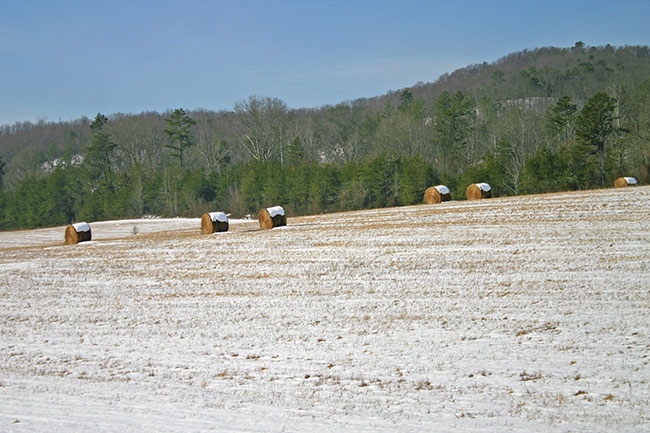
Features
Agronomy
Applications
Field Crops
Other
Winterkill from manure application
Manure application on frozen ground should be avoided but sometimes weather happens. Even in an emergency application situation, producers should be aware of possible winterkill.
October 8, 2018 by Christine Brown
 When the soil is frozen, infiltration of the manure into the soil can’t occur. Salts in manure can then turn deadly for the crop. Photo: Dreamstime
When the soil is frozen, infiltration of the manure into the soil can’t occur. Salts in manure can then turn deadly for the crop. Photo: DreamstimeManure applied to wheat crops or to forage crops can be an excellent option, but not in winter on frozen soils.
Manure application in winter should never be part of a manure management plan. Rather, it should be part of a contingency plan, because we all know that weather happens. Frequent rain and a late corn harvest are taxing manure storage capacities on many farms. Contingency plans are essential for manure that must be applied in less than ideal conditions. A forage or wheat field can be an ideal site for contingency plan manure application, because compaction should not be an issue, and the soil cover would help prevent nutrient runoff and erosion. Forage or wheat fields are ideal for those reasons. However, winterkill becomes a much greater risk, especially with application of liquid manure. Why? Beside the common risks – which include compaction from wheel traffic and crown damage – manure contains salts.
Salinization, the concentration of salt in the root zone, is not an issue in Ontario. Ample precipitation and drainage leaches the salts through the soil profile. However, when the soil is frozen, infiltration can’t occur. Salts in manure can then turn deadly. High sodium also has a negative effect on soil structure; making the soil more susceptible to crusting, and further decreasing the capacity for infiltration.
Livestock manure contains many salts, including ammonium, calcium, magnesium, potassium and sodium. When accrued, they can be significant. Salt content varies from farm to farm based on livestock species, diet formulation and even the salt in the drinking water. Many manure analyses report “Total Salts” or electrical conductivity (EC) to reflect the accumulated salts. A typical hog manure (as applied basis) can have about 20 mS/cm (milliSemens/cm) or about 125 lbs of total salts per 1,000 gallons. Dairy manure average is 14 mS/cm or about 90 lbs/1000 gallons. Sodium and magnesium chloride have a working temperatures to about -15° C; potassium chloride to -4° C, while calcium chloride can work to about -23° C.
When manure is applied on frozen or snow-covered soils, the salts melt the snow and ice at the soil surface. The layer below may still be frozen, preventing infiltration. The melted, saturated layer is high in salts, toxic to roots, and more prone to erosion and runoff, and more susceptible to frost heaving. All these risks are increased where manure with high EC or total salt contents has been applied.
When contingency plan applications become necessary during the winter season, options include:
- Late summer application to forage crops after the final cut or at the beginning of the critical harvest period,
- Temporary storage at a neighbouring storage that has extra capacity,
- Application to forage fields or cover crops that will be tilled or killed,
- Application to the most level harvested fields, preferably with residue still present, furthest away from surface water, where application does not occur through water runs or “flow paths.”
Sampling manure at the time of application should be standard practice. A manure analysis that includes total salts will help to determine the level of risk if contingency application in winter is a last resort.
Christine Brown is a field crops sustainability specialist with the Ontario Ministry of Agriculture, Food and Rural Affairs.